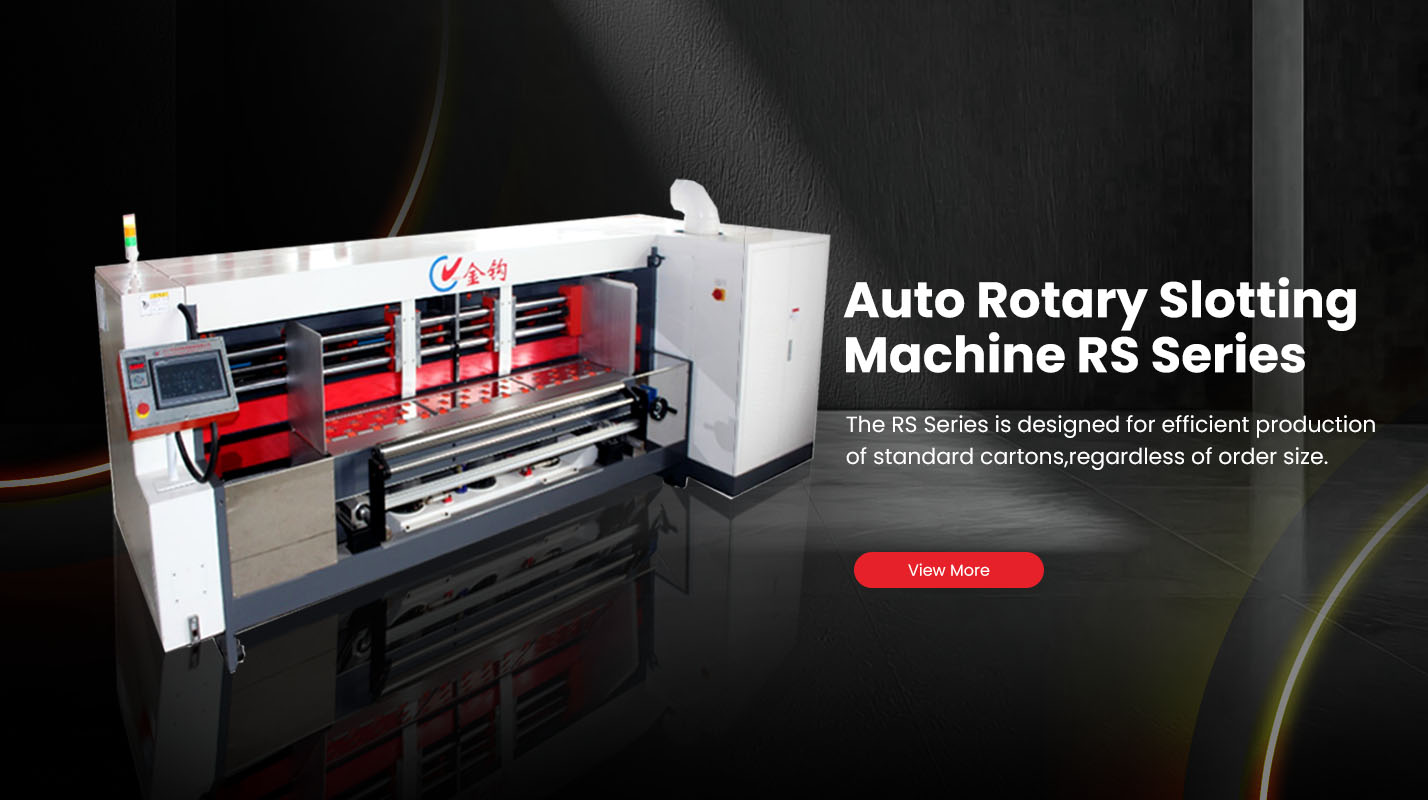The Future Of Smart Corrugated Packaging Production in 2025
The corrugated packaging industry is entering a new era of digital transformation and intelligent automation. As global demand for sustainable, customized, and efficient packaging grows, manufacturers are rethinking how corrugated boxes are designed, produced, and delivered.
By 2025, smart corrugated packaging production will no longer be a trend — it will be the industry standard. With advances in IoT connectivity, data-driven manufacturing, and servo-controlled automation, factories are becoming smarter, faster, and more eco-efficient than ever before.
1. The Global Shift Toward Smart Packaging Production
Over the last decade, the corrugated packaging industry has evolved from manual processes to semi-automatic production lines. Now, in 2025, the focus is on smart manufacturing — a combination of automation, data, and connectivity that enables flexible, high-efficiency production.
Key global trends accelerating this shift include:
Rising e-commerce demand for customized box sizes.
Sustainability regulations driving waste reduction.
Labor shortages prompting automation adoption.
Customer expectations for faster turnaround times.
Smart packaging lines integrate these needs by allowing real-time control, minimal waste, and automatic adjustment across every production step.
2. From Traditional Machinery to Intelligent Automation
Traditional carton lines relied on manual adjustments and mechanical synchronization. Today’s smart systems feature:
PLC and servo control systems for precise knife and scorer positioning.
Touchscreen digital panels with job memory and diagnostics.
Sensors and feedback loops to maintain cutting and scoring accuracy.
Automated feeding, folding, and stacking systems that reduce labor.
These intelligent systems enable production flexibility — switching box sizes, flute types, and designs with just a few screen taps.
Example: A JINGOUPACK fully automatic line can adjust slotting, scoring, and feeding within 3 minutes, compared to 30 minutes for manual machines.
3. Data-Driven Manufacturing and IoT Integration
In 2025, data is becoming the core of packaging production. Smart corrugated machines now feature IoT connectivity that allows factories to monitor performance in real time.
Key capabilities include:
Remote diagnostics for predictive maintenance.
Automatic performance tracking — production speed, downtime, and material usage.
Centralized control platforms for multi-line synchronization.
Cloud-based reporting for management and quality audits.
With integrated data analytics, manufacturers can make better decisions, plan maintenance before failures occur, and optimize efficiency across the factory.
4. Sustainable Manufacturing Becomes Standard
Environmental awareness continues to shape packaging trends in 2025. Smart corrugated machinery supports green production through:
Optimized sheet cutting to reduce paper waste.
Energy-saving servo drives and inverter systems.
Recyclable, lightweight materials processed with precision control.
Digital calibration to prevent overproduction and rework.
For example, JINGOUPACK’s automatic lines use energy-efficient motors and low-friction mechanical designs, reducing energy use by up to 20% while maintaining top-level performance.
5. Short-Run and On-Demand Packaging Dominates
The rise of e-commerce and custom branding means more factories are shifting toward short-run, on-demand packaging.
Instead of mass-producing standard box sizes, manufacturers now need to produce small batches with minimal setup time.
Smart systems like JINGOUPACK’s CK25 Box Maker enable on-demand production by combining slotting, slitting, and creasing in a single line.
This allows manufacturers to:
Produce only what is needed — no excess inventory.
Handle variable box sizes quickly.
Serve more clients with personalized packaging.
As digital orders and customization requests continue to grow, on-demand automation becomes the key to profitability.
6. Human–Machine Collaboration
While automation reduces labor, it also redefines roles within the factory.
Operators are no longer machine handlers — they are system supervisors and data managers.
Smart machines feature intuitive human–machine interfaces (HMI) that guide users step by step, minimizing human error.
Technicians can adjust production parameters remotely or monitor equipment via mobile apps.
In 2025, the packaging industry is moving toward collaborative automation, where people and machines work together for greater flexibility and quality.
7. AI-Powered Quality Control
Artificial Intelligence (AI) is becoming part of the quality management system in corrugated production.
Vision sensors and smart cameras can now:
Detect defects in real time (tears, mis-slots, or misalignment).
Auto-adjust settings to correct minor deviations.
Collect quality data for continuous improvement.
These self-learning systems ensure every box meets export standards without manual inspection, improving yield rates by 10–15%.
8. Integration of Digital Printing and Box Forming
The boundary between printing and box forming is fading.
Smart lines can now combine digital inkjet printing, slotting, and folding within a single workflow.
Benefits include:
Full customization for brand logos and barcodes.
Elimination of separate printing processes.
Faster lead times for retail and e-commerce packaging.
JINGOUPACK’s integrated solutions support modular expansion, allowing customers to add digital printing or gluing units as their production needs grow.
9. Predictive Maintenance and Remote Service
Smart corrugated systems use sensors to detect mechanical wear before a breakdown occurs.
This predictive maintenance approach saves time and cost by scheduling service before production stops.
Through remote diagnostic access, engineers from JINGOUPACK can:
Analyze machine performance data.
Provide instant troubleshooting.
Deliver software updates online.
This ensures global customers maintain continuous production with minimal downtime.
10. The Road Ahead: Fully Connected Smart Packaging Plants
By 2025, the most advanced corrugated packaging factories will operate as fully connected smart ecosystems.
Every component — from slitter scorers to folder gluers — will communicate through unified digital networks.
Such plants will feature:
Autonomous production scheduling.
AI-based inventory management.
Automated logistics integration.
Zero-waste, energy-optimized operation.
This marks the arrival of the Smart Corrugated Factory, where real-time data ensures continuous optimization and sustainability.
JINGOUPACK: Powering the Smart Packaging Revolution
JINGOUPACK is at the forefront of intelligent packaging machinery innovation.
Its product lineup — including automatic slitter scorer machines, rotary slotters, and digital box forming lines — is designed for next-generation smart factories.
Key advantages include:
Servo-driven accuracy (±0.3 mm).
PLC digital control with memory storage.
CE-certified safety systems.
Energy-efficient design for sustainable operation.
Remote monitoring and global after-sales service.
With these technologies, JINGOUPACK helps manufacturers around the world transition from traditional production to intelligent, data-driven corrugated packaging.
Conclusion
The future of corrugated packaging production is smart, automated, and sustainable.
By 2025, factories will rely on data intelligence, digital control, and energy efficiency to meet the world’s demand for flexible, eco-friendly packaging.
JINGOUPACK continues to lead this transformation — empowering manufacturers with cutting-edge solutions that combine automation, precision, and environmental responsibility.
The result is a new generation of packaging production: faster, cleaner, smarter, and ready for the challenges of a connected world.





